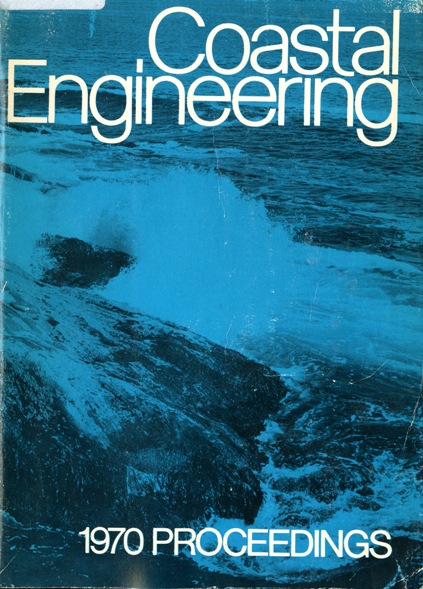Abstract
miles of coastline, including the major area of the port limits and the inner harbor, was constructed to study combined wave, tide and wind action on transport of sand along the coast. The effects of three predominant conditions of swell and wind-waves on the state of the ocean front beaches were studied by observing relative changes in shoreline contours. Fluorescentdyed sand tracers were also used in the model. The accumulation and dredging of sand near the harbor entrance was reproduced in the model and various dredging and storage proposals were carried out to scale on the model. The model study enabled the cause of beach erosion to be attributed to the existence of an offshore shoal produced by the localized dumping of sand dredged from the harbor approaches. This shoal caused selective wave action along the coastline, which was reproduced to scale in the model. It was found that wind and tidal action had a major effect on the redistribution of sand on the beaches as modeled but a minor effect on the permanence of the harbor entrance channel. Apart from the interaction of dredged sand at times being fed to the beaches, the problem of beach erosion could be studied independently of that of harbor silting on the same model. Sand was fed to maintain a state of equilibrium on the southern aooroach beach to the harbor to simulate the littoral sunply. The northern beach downdrift of the harbor entrance, where the erosion problem existed, was found to be essentially starved of littoral supply, due to maintenance of the harbor entrance by dredging and offshore dunroing. The requirements of the model study also gave rise to a program of field data collection on the governing environmental factors, which in itself aided considerably to the diagnosis of the causes of the state of unbalance in the shoreline. The model study led to several proposed remedial schemes, certain of which have been adopted since completion of the model study. The model study was conducted by the South African Council for Scientific and Industrial Research, for the South African Railways and the City Council of Durban.
Authors retain copyright and grant the Proceedings right of first publication with the work simultaneously licensed under a Creative Commons Attribution License that allows others to share the work with an acknowledgement of the work's authorship and initial publication in this Proceedings.

